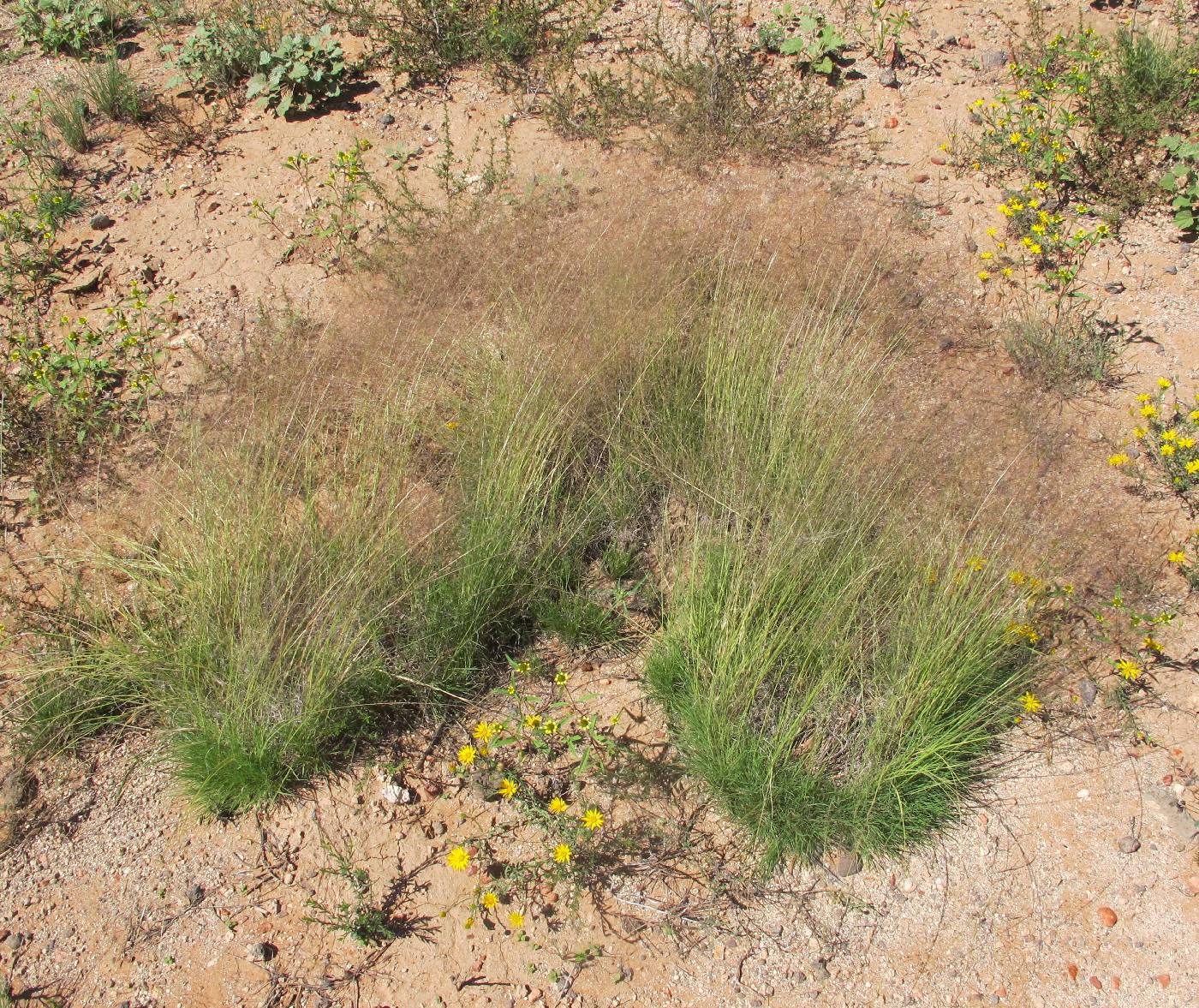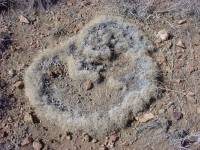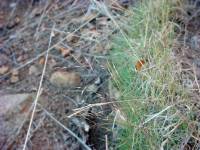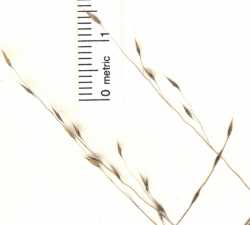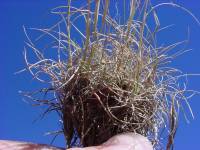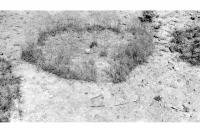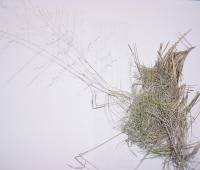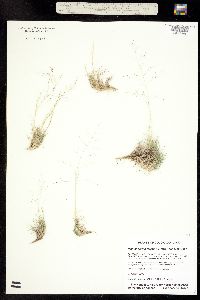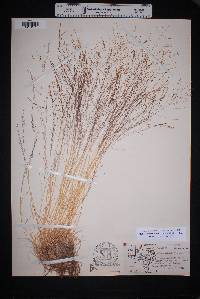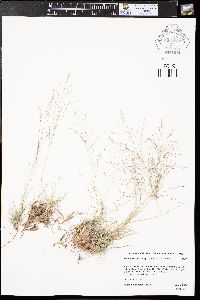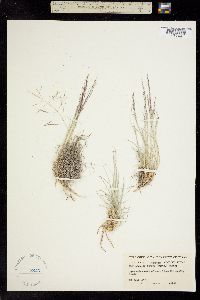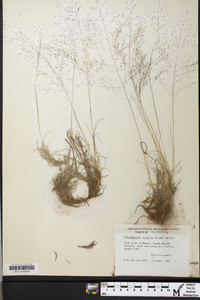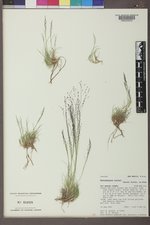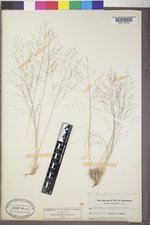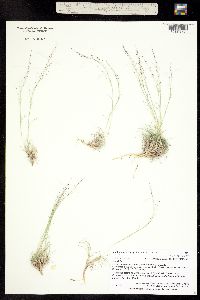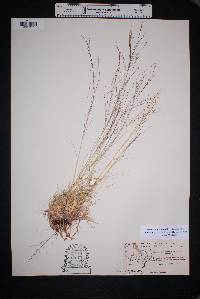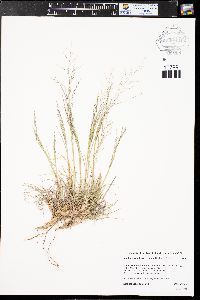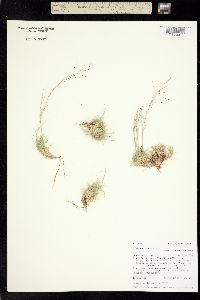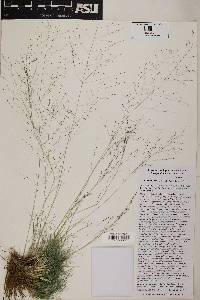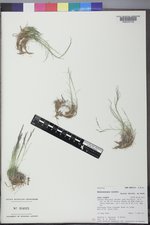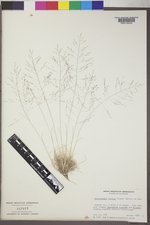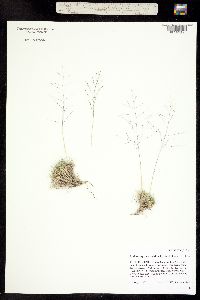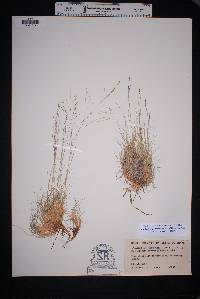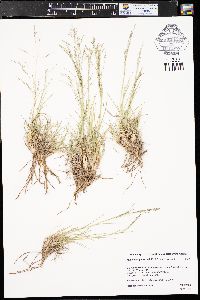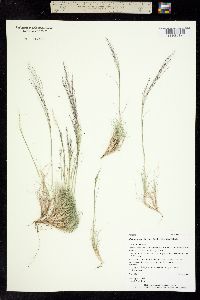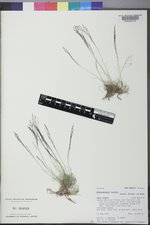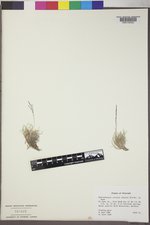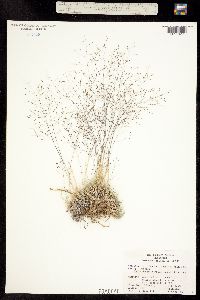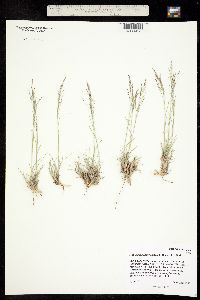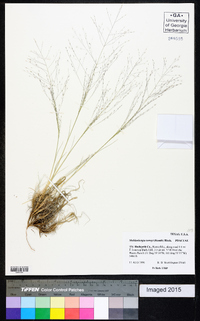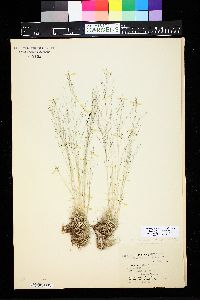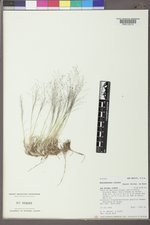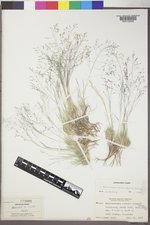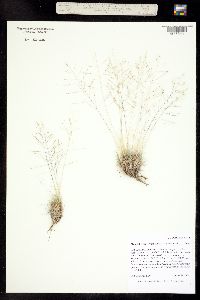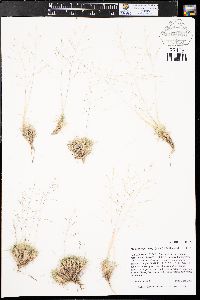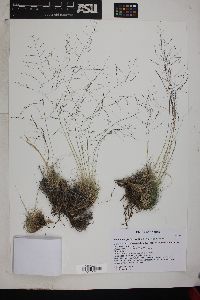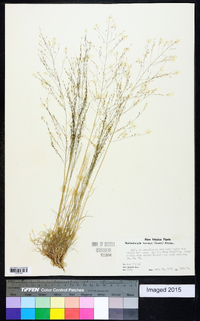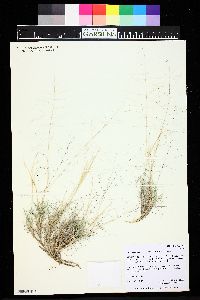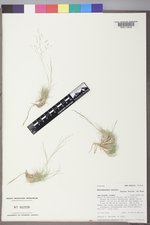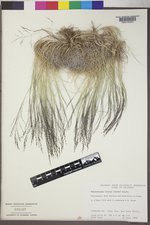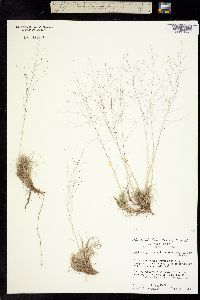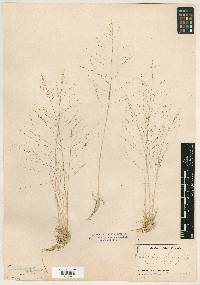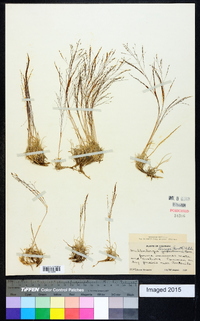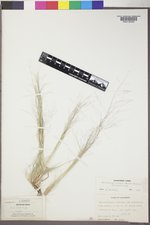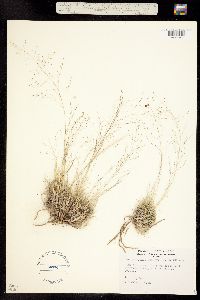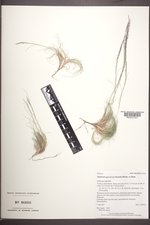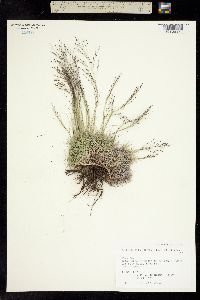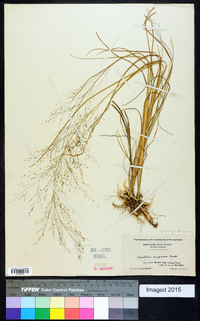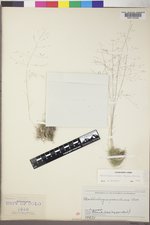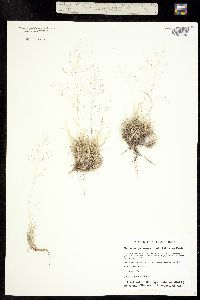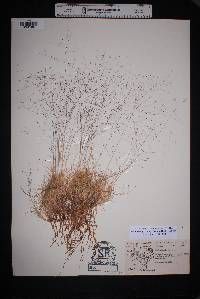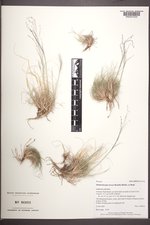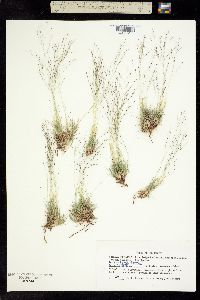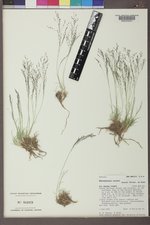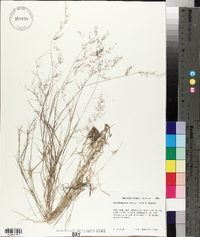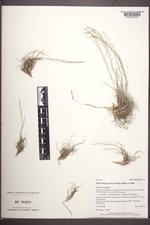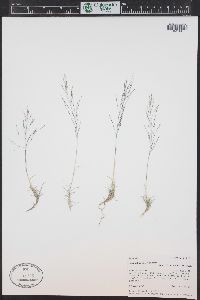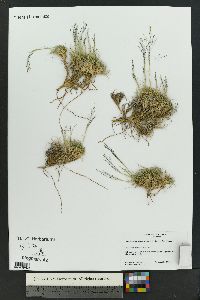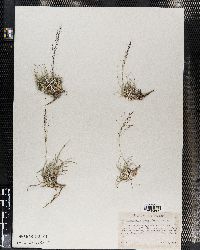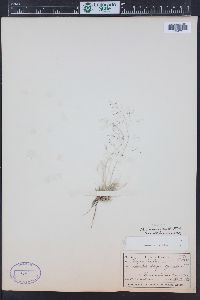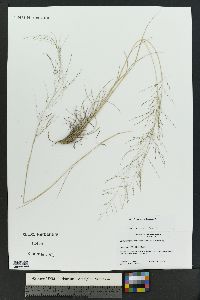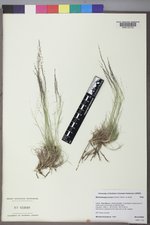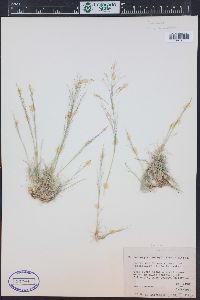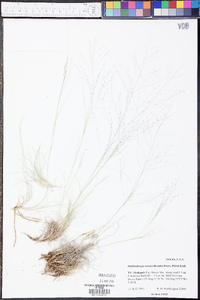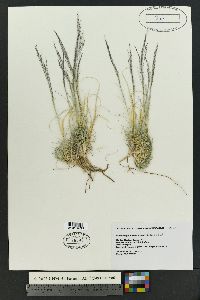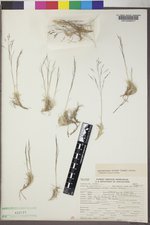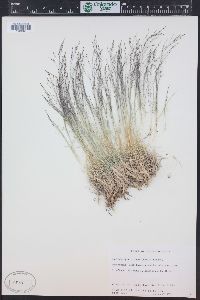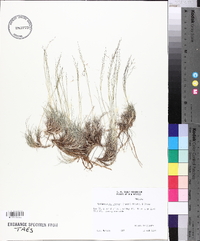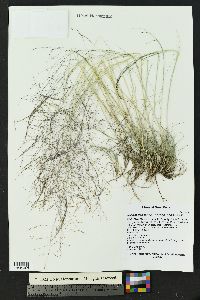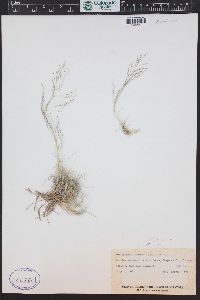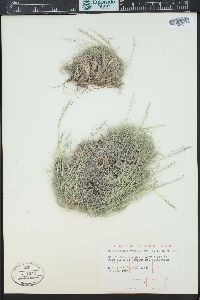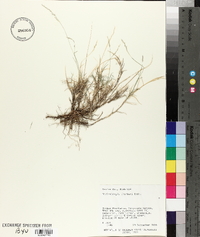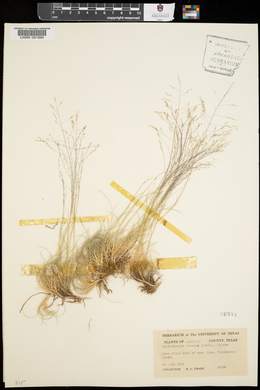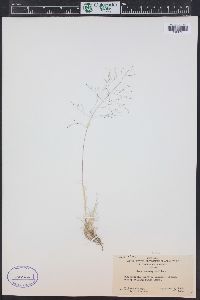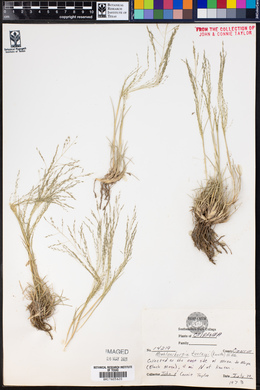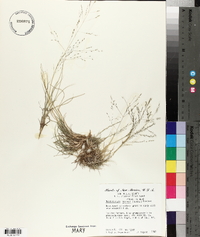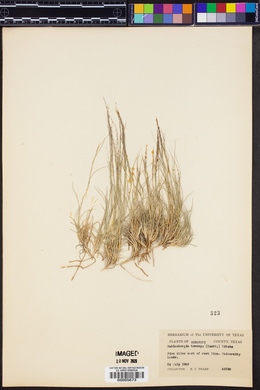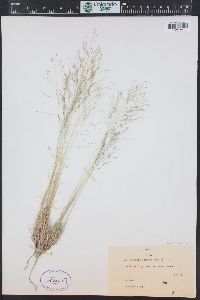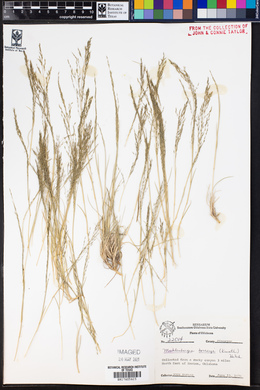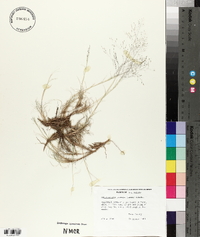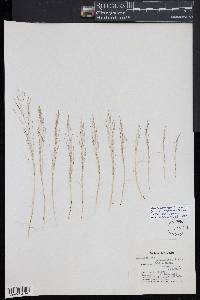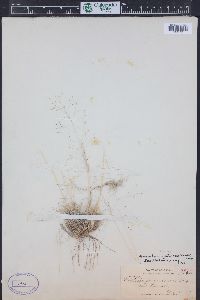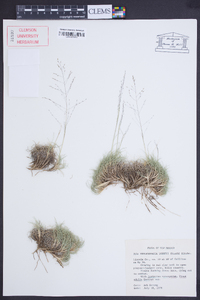Muhlenbergia torreyi
|
|
|
|
Family: Poaceae
ring muhly, more...Ringed Muhly
[Muhlenbergia gracillima Torr., moreMuhlenbergia nardifolia Griseb.] |
Plants perennial; cespitose, not rhizomatous. Culms 10-40(50) cm, decumbent, usually all the nodes concealed by the sheaths; internodes mostly scabrous or smooth, hispidulous below the nodes. Leaves strongly basally concentrated, most blades not reaching more than 1/5 of the plant height; sheaths shorter than the internodes, rounded, not keeled, scabridulous or smooth, not becoming spirally coiled when old; ligules 2-5(7) mm, hyaline, acuminate, lacerate, often with lateral lobes; blades 1-3(5) cm long, 0.3-0.9 mm wide, tightly involute or folded, arcuate, scabridulous, midveins and margins not thickened, green, apices somewhat sharp-pointed. Panicles 7-21 cm long, 3-15 cm wide, diffuse; primary branches 1-8 cm, diverging 30-90° from the rachises, stiff, naked basally; pedicels 1-8 mm, sometimes appressed to the branches. Spikelets 2-3.5 mm. Glumes equal, 1.3-2.5 mm, scabridulous, 1-veined, apices acute to acuminate, minutely erose, unawned or awned, awns to 1.1 mm; lemmas 2-3.2(3.5) mm, narrowly elliptic to lanceolate, appressed-pubescent on the basal 1/2-3/4 of the margins and midveins, apices scabrous, acuminate, awned, awns 0.5-4 mm; paleas 2-3.2(3.5) mm, narrowly elliptic, intercostal region sparsely pubescent, apices acuminate; anthers 1.2-2.1 mm, greenish. Caryopses 1.7-2 mm, fusiform, brownish. 2n = 20, 21. Muhlenbergia torreyi grows in desert grasslands and open woodlands on sandy mesas, calcareous rock outcrops, and rocky slopes, at elevations of 1000-2450 m. Its range extends from the southwestern United States to northern Mexico. It also grows, as a disjunct, in northwestern Argentina. Gould 1988, FNA 2003 Common Name: ring muhly Duration: Perennial Nativity: Native Lifeform: Graminoid General: Tufted perennial grass, culms 10-50 cm, decumbent, usually all the nodes concealed by the sheaths; internodes mostly scabrous or smooth, hispidulous below the nodes. Vegetative: Leaves in small basal tufts, most blades not reaching more than 1/5 of the plant height, 1-3(5) cm long, <1 mm wide, curving (arcuate), tightly involute or folded, scabridulous, apices somewhat sharp-pointed, midveins and margins green and not thickened; Inflorescence: Panicles diffuse, 7-20 cm long, 3-15 cm wide; primary branches 1-8 cm, stiff, naked basally, diverging 30-90 degrees from the rachises; pedicels 1-8 mm, sometimes appressed to the branches; spikelets 2-4 mm; glumes equal to each other in length, 1-3 mm, scabridulous, 1-veined, unawned or awned with awns to 1 mm; lemmas 2-3 mm, narrowly elliptic to lanceolate, acuminate, awned, the awns 0.5-4 mm; paleas 2-3 mm, narrowly elliptic, apices acuminate. Ecology: Found in desert grasslands and open woodlands on sandy mesas, calcareous rock outcrops, and rocky slopes, from 4,000-8,000 ft (1219-2438 m); flowers August to October. Distribution: n AZ, NM, CO, se WY, w TX, w OK, w KS, south to n MEX; also grows, as a disjunct, in nw Argentina. Notes: Muhlenbergia is a large and diverse grass genus primarily distinguished by having single-flowered spikelets with unequal glumes. M. torreyi is a low perennial grass with basal clumps of short, thin, curved blades that are no more than one fifth the height of the plant (1-5 cm long); over the years it forms rings as the grass spreads outward and the central clumps die; it has a sparse, open inflorescence <20 cm long, with few spikelets at the ends of the branches. M. arenicola appears similar but in that species the basal leaf blades are longer, 4-10 cm long, about 1/4 to 1/2 the height of the plant. M. arizonica is also similar, but has white, thickened margins and midveins on the leaf blades and a shorter ligule, 1-2 mm long. Ethnobotany: Unknown Etymology: Muhlenbergia is named for Gotthilf Heinrich Ernst Muhlenberg (1753-1815) a clergyman and botanist from Pennsylvania; torreyi honors John Torrey (1796-1873) a significant figure in American botany. Synonyms: Muhlenbergia gracillima Editor: AHazelton 2015 |

